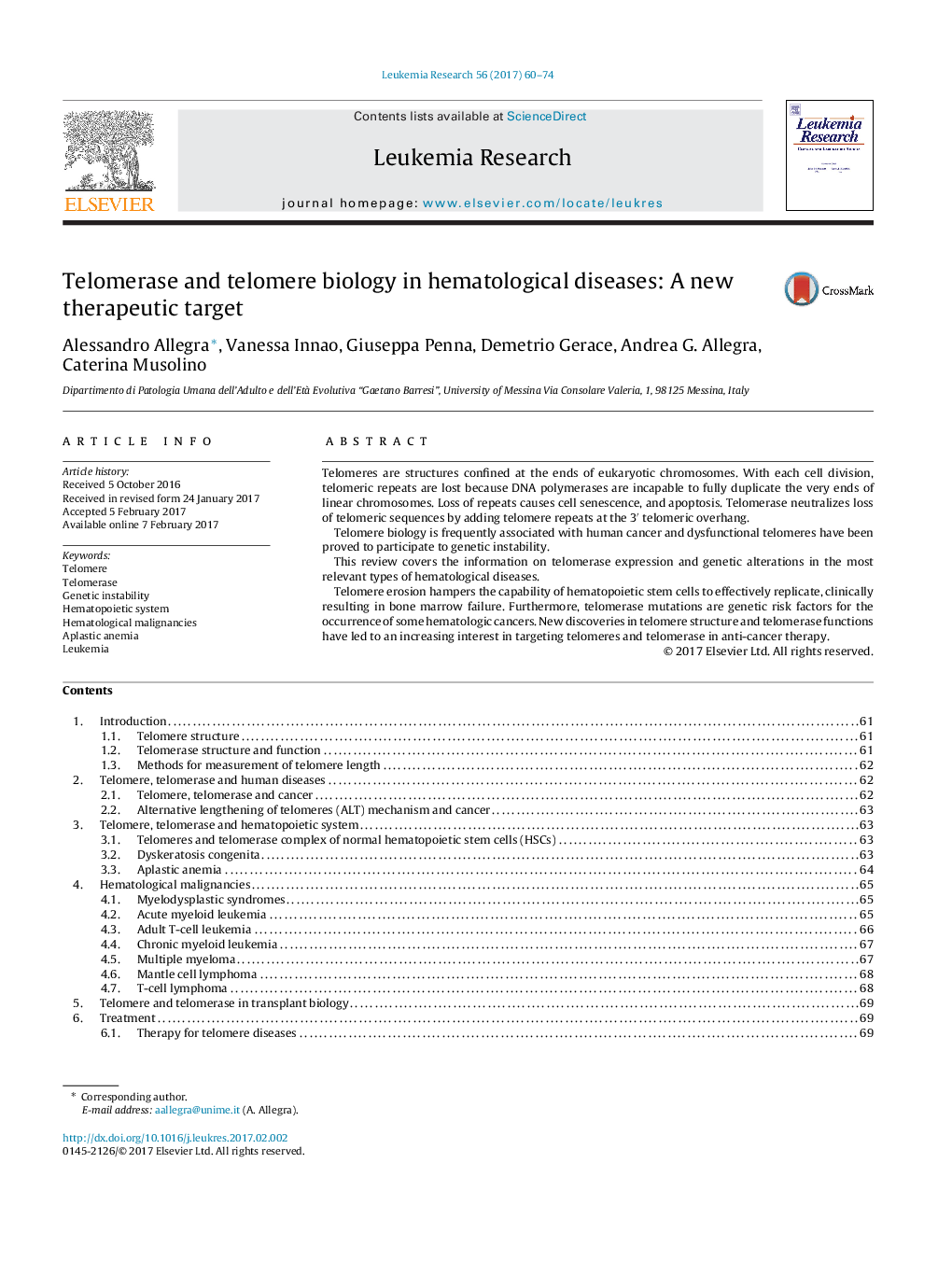| Article ID | Journal | Published Year | Pages | File Type |
|---|---|---|---|---|
| 5527823 | Leukemia Research | 2017 | 15 Pages |
â¢Telomeres are structures confined at the ends of eukaryotic chromosomes.â¢Telomerase neutralizes loss of telomeric sequences by adding telomere repeats.â¢Telomere biology is frequently associated with human cancer.â¢Telomerase mutations are risk factors for some hematological diseases.â¢There is an increasing interest in targeting telomeres and telomerase in anti-cancer therapy.
Telomeres are structures confined at the ends of eukaryotic chromosomes. With each cell division, telomeric repeats are lost because DNA polymerases are incapable to fully duplicate the very ends of linear chromosomes. Loss of repeats causes cell senescence, and apoptosis. Telomerase neutralizes loss of telomeric sequences by adding telomere repeats at the 3â² telomeric overhang.Telomere biology is frequently associated with human cancer and dysfunctional telomeres have been proved to participate to genetic instability.This review covers the information on telomerase expression and genetic alterations in the most relevant types of hematological diseases.Telomere erosion hampers the capability of hematopoietic stem cells to effectively replicate, clinically resulting in bone marrow failure. Furthermore, telomerase mutations are genetic risk factors for the occurrence of some hematologic cancers. New discoveries in telomere structure and telomerase functions have led to an increasing interest in targeting telomeres and telomerase in anti-cancer therapy.
